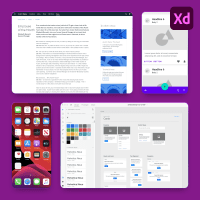
In modern software engineering, the pressure to deliver scalable, maintainable, and cost-effective solutions has never been greater. For CTOs and software engineers, finding the balance between speed and quality is a constant challenge. Enter component libraries and SDKs—powerful tools that can transform the way teams build and deploy applications.
At Impekable, we’ve seen firsthand how a well-designed library or SDK can reduce time-to-market, lower costs, and enhance developer experiences. Whether you’re building for internal use or crafting tools for external developers, the right approach can amplify value across your organization. In this blog, we’ll explore best practices for creating component libraries and SDKs, drawing on our own experiences helping our clients streamline their offerings.
1. Start with User-Centered Design
The foundation of any successful SDK or component library lies in understanding your audience. Whether it’s internal engineers or third-party developers, the key to adoption is usability.
At Impekable, we emphasize ROI-driven development, which means prioritizing features that deliver immediate value. For example, in our collaboration with Marqeta, we focused on creating UI SDKs that were not only robust but also easy for developers to integrate into their existing ecosystems. By investing in user research and iterative feedback loops, we ensured the tools we built aligned with real-world developer needs, significantly reducing friction.
Key takeaway: Think of your SDK as a product, not just a tool. Design it with empathy, and always prioritize ease of use.
2. Optimize for Speed and Scalability
Speed is a critical metric in today’s competitive landscape, but scalability is what ensures long-term success. Component libraries and SDKs allow teams to achieve both by reducing redundant development efforts and fostering consistency across applications.
For instance, reusable components standardize workflows, ensuring that engineers spend less time solving the same problems repeatedly. A well-architected SDK, built with scalability in mind, empowers teams to adapt quickly to changing requirements without compromising on quality.
At Impekable, we use a lean, cross-functional approach to ensure that these solutions are optimized for performance. From implementing test-driven development (TDD) to leveraging automation, we build systems designed to scale effortlessly with your business needs.
Key takeaway: Scalability begins with modularity. Build your library or SDK in a way that anticipates growth, both in functionality and user base.
3. Embrace Documentation as a First-Class Citizen
An SDK is only as good as its documentation. Engineers need clear, concise, and actionable guidance to get started quickly and avoid roadblocks. Poor documentation can kill adoption, no matter how brilliant your SDK is under the hood.
During our work with one of our clients, we treated documentation as an integral part of the development process. By including code examples, step-by-step tutorials, and troubleshooting tips, we ensured developers could realize value immediately. This focus on documentation also reduced support overhead, as many common questions were answered upfront.
Key takeaway: Invest in high-quality documentation—it’s as important as the code itself. Make it a collaborative effort across engineering, product, and design teams.
4. Measure Success with Developer Adoption Metrics
Building an SDK or library isn’t a one-and-done effort. Continuous improvement, driven by real-world feedback, is essential to maintaining relevance and utility.
We encourage teams to measure success through metrics like time-to-first-success (how quickly a developer can implement a working solution using your SDK), adoption rates, and feedback loops. These insights help prioritize enhancements and ensure your library evolves alongside user needs.
Key takeaway: Treat your SDK as a living product. Establish KPIs, listen to your users, and iterate constantly.
Conclusion
Component libraries and SDKs are more than just engineering tools—they’re accelerators for innovation and enablers of consistency. Done right, they reduce costs, boost developer satisfaction, and ultimately, improve business outcomes.
At Impekable, we specialize in helping teams build tools that create tangible value. Whether you’re a startup looking to scale or an enterprise aiming to modernize, we bring the expertise to deliver solutions tailored to your unique goals. Ready to take your development process to the next level? Let’s build something Impekable together.
By focusing on user needs, scalability, and continuous improvement, CTOs and software engineers can unlock the full potential of component libraries and SDKs. Reach out to learn how we can help you deliver ROI-driven innovation.
Frequently Asked Questions

Pek Pongpaet
Helping enterprises and startups achieve their goals through product strategy, world-class user experience design, software engineering and app development.
|
-

“Impekable delivered multiple, fantastic options for us… they genuinely cared about the project and our goals.”
Co-founder, JSwipe, acquired by Tinder
Our Case Studies





